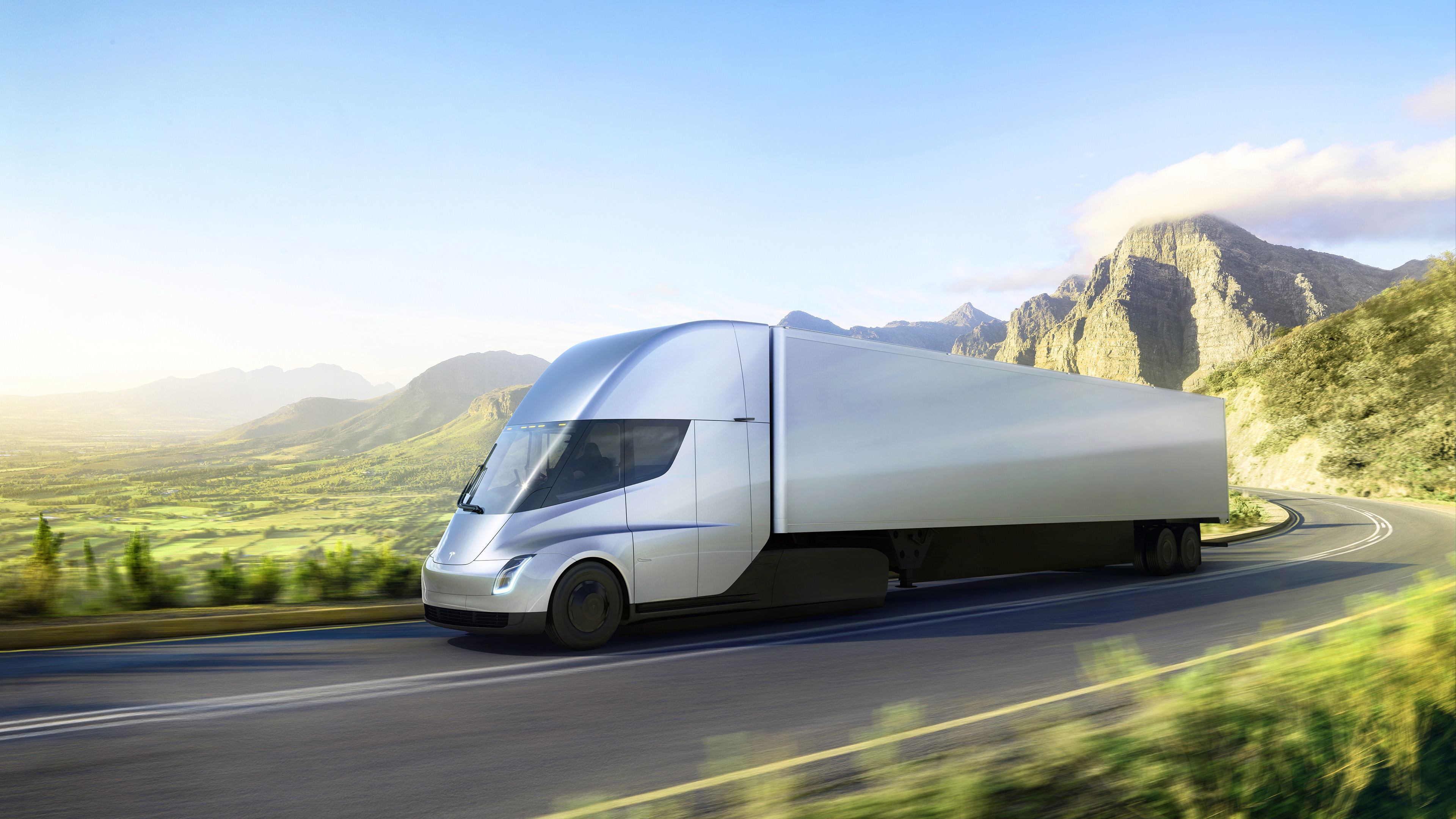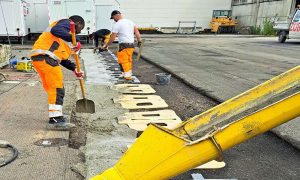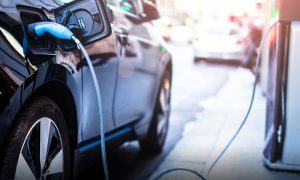Insight: Vehicle electrification key for commercial fleets
World’s leading event for transport, logistics and mobility will not return until 2022

We have been aware for decades that driving a personal car for private use contributes to pollution. However, if you manage a fleet of vehicles, the negative environmental impact is even higher. The onus lies with regulators, companies and fleet managers to mitigate emissions, and this crucial item on the environmental agenda should not take a back seat to commercial growth and success; in fact, it should be considered a complementary conversation to commercial efficiency.
Rising CO2 and Particulate Matter (PM) emissions have brought the transportation sector under heavy pressure to reduce its environmental footprint. Transportation accounts for 24% of direct global CO2 emissions from fuel combustion, with road vehicles together accounting for nearly three-quarters of transport-related CO2 emissions.
Road transport also causes around one third of all emissions of PM, fine particles that can restrict breathing and cause premature death. Overall, there were 385,000 deaths estimated worldwide due to transport-related air pollution in 2015.
As a result, we have seen renewed efforts and a rise in legislations to encourage individuals to cut down on car travel and use public transport, walk and cycle. Initiatives to encourage drivers to trade petrol and diesel fueled cars for new electric vehicles (EVs) are also on the increase.
It is easier said than done. When it comes to reducing carbon footprints, replacing older vehicles with modern green alternatives and driving people towards e-vehicles, the road is a bumpy one, and change is not always practically feasible or financially viable.
There is no instantaneous solution. There is little doubt that electrification of vehicles can immediately cut greenhouse gas emissions from commercial vehicles.
There is also no question, that these vehicles lag behind, as they face major technical hurdles to be surpassed in a bid to achieve sufficient electrification of the commercial vehicle sector, and in particular, longer distance road freight, to drive tangible results. What remains crucial is to keep in sight projected monetary savings that could help finance a gradual or wholesale greening of existing fleet.
For the 3PL and express delivery industries, there is a limited scope to reduce the number of journeys made, nor is it feasible to trade in entire fleets of diesel and petrol vehicles for electric vehicles within a short or even medium timeframe. That being said, we are seeing great examples of long-term projected plans by industry leaders to achieve full fleet greening.
Recently, Amazon announced plans to achieve a fleet of around 100,000 electric trucks as part of the company’s participation in the Climate Pledge, to reach the Paris Agreement’s terms 10 years early. Signatories of the Climate Pledge also agree to make their businesses net zero carbon by 2040, ten years ahead of the Paris deadline of 2050. The resonating message here is that while it may not be today, that a full fleet overhaul is implemented, it should be a part of every company’s long-term plan. We need to start somewhere.
If we are to make a rapid reduction in our environmental footprint, we need to become much better at managing existing fleets. The good news is that there is plenty we can do right now to make existing fossil fuel vans and trucks more sustainable.
ION was born out of an emissions reduction initiative and a joint venture between CE-Creates, Crescent Enterprises’ internal business incubation platform and Bee’ah, the leading Sharjah-based environmental solutions company. Bee’ah was looking for ways to reduce the carbon footprint of its existing fleet of 1200 vehicles. The company discovered that through the use of route optimisation software and RFID-tagged bins, it could dramatically reduce emissions and optimise fuel consumption.
There have been similar successes elsewhere. Logistics Emissions Reduction Scheme (LERS), a UK supply chain industry initiative, claims that its members have become 13% more fuel efficient by adopting six measures and applying them to existing diesel vehicles. Some of these measures, such as keeping consistent speeds, avoiding unnecessary braking and accelerating more smoothly, are a matter of modifying driver behaviour.
Adoption of telematics and route optimisation software require moderate investments in technology. Other measures include the use of low resistance tyres, regular monitoring of tyres to ensure air pressure is at optimum levels and installation of aerodynamic devices on vehicles. With the emergence of smartphone technology, it has become easy to track vehicle movements, optimise routes, schedule periodic maintenance and encourage the shared utilisation of vehicles.
All these measures can be applied now to existing vehicles. They achieve significant carbon and cost savings and create a breathing space for fleet managers to begin planning the transition to electric vehicles.
Unless there is regulation in place to force fleet electrification, operators would be advised to run trials in which they would first replace up to 10% of their fleet to gauge EVs’ overall impact on operations. If there are positive results, they could move to change the whole fleet at a faster pace. At least for the next two years, smaller vehicles used for express delivery are the most likely candidates for electrification. Their shorter charging times make them easier to integrate into everyday operations and charging points tend to be more plentiful in urban locations.
Despite a recent setback with DHL’s decision to close StreetScooter, the choice of electric delivery vans is increasing and their range continues to improve. More and more logistics companies are adding them to their fleets, including FedEx with an order for 1000 Class 5 electric vans made by Ryder and UPS with 1000 vans from Workhorse Group.
Eventually, even the very largest trucks will be candidates for electrification. In 2018, Daimler announced the all-electric, 18-wheel Freightliner eCascadia. Scheduled to begin production at the end of 2021, this class-8 truck is planned to have a range of 250 miles and a battery charge capacity of 80% in 90 minutes.
Tesla has also announced its entry into the market, with plans to make two semis, with a range of 300 and 500 miles. Although production has been pushed back to an unspecified date, Tesla is claiming buyers of the truck will earn their money back in operating savings within two years. We should soon see the Semi on the region’s roads, with Bee’ah placing an order for 50 of the vehicles straight after their official launch.
There are, naturally, barriers to the acquisition of EVs. These include a lack of legislation to enforce green vehicles to be used in fleets, the higher purchase cost of EVs and a lack of historical data comparing the total cost of ownership of a green fleet with an ICE fleet. Sacrifices need to be made, and these barriers can be overcome if the world is to conserve its ecosystem.
In Dubai, DEWA has solved one significant problem by spearheading the rollout of charging points. We at ION have partnered with SEWA to establish a charger network in Sharjah. Resistance to the idea of EVs will, we believe, disappear with time and greater awareness.
The debate over the overall cost of sustainability measures will continue. In the short term, the financial impact is negative as the cost of implementing green initiatives, including the purchase of EVs, is absorbed. There is, however, an economic benefit of 15 to 20% if the fleet is operated for three years or more.
In the context of EVs, legislation is vital for two reasons. It first and foremost signals the intent of regulators. It also incentivises the first movers in the ecosystem by providing them with subsidies or discounts. Naturally, there is friction between policymakers and civil society groups regarding the stringency of green fleet legislation; however, as we become aware of the negative effects of global warming, regulators are now being embracing opportunities to make our future more sustainable. The UK government is amongst those leading the way, with plans to end the sale of new diesel and petrol cars by 2035.
Fleet managers looking to reduce their carbon footprints can implement a range of measures to the vehicles they already own. As these savings start to manifest on balance sheets, they can begin planning the long-term transition to an electric fleet with motivated vigor, and a belief that change is both feasible, and profitable, in the not so distant future.
ION is a sustainable transportation company, established in 2018 as a joint venture between CE-Creates (Crescent Enterprises) and Bee’ah.

























